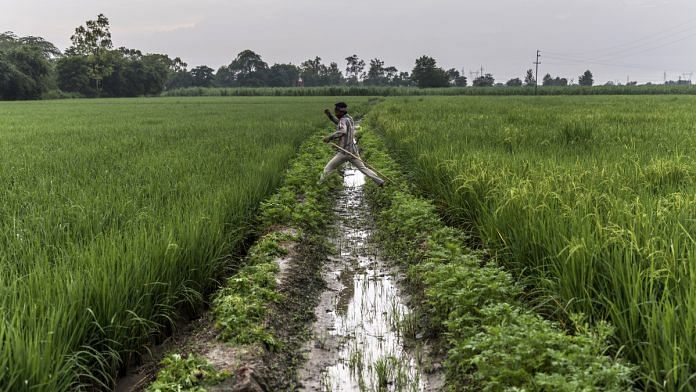Bengaluru: Intensive irrigation is contributing to extreme moist heat stress in the Indo-Gangetic plain, extending all the way up to Pakistan and Afghanistan, a new study has found.
According to researchers from IIT Gandhinagar, high humidity from intensive irrigation, combined with high temperatures induced by human activity worsens moist heat stress, despite decreasing temperatures on the ground.
Heat stress refers to the impact of high temperatures on human physiology resulting from the inability of the human body to cool itself. Moist heat stress is the heat stress that emerges from humid conditions and is more closely associated with mortality in India.
The multinational study — by authors from India, US and Germany, led by Vimal Mishra of the Water and Climate Lab at IIT Gandhinagar — found that primarily intensification of irrigation practices has worsened moist heat stress and associated health risks.
Apart from intensive irrigation, the effect is also worsened at a smaller scale by large lawns and rooftop gardens that are regularly watered, noted the scientists. The findings of the study were published in Nature Geoscience this week.
Also read: Water bodies running dry at alarming rate due to groundwater depletion, reveals study
Moist heat stress mechanism
After the Green Revolution, the net irrigated area in India increased from 31 million hectares in 1970 to over 68 million in 2019.
The Indo-Gangetic Plain is one of the most intensively irrigated regions in the world, with more than 60–70 per cent of the total area irrigated by either surface or groundwater. This area continues to expand and is likely to do so in the future as well.
Mishra and his colleagues used in situ as well as satellite data to analyse the effect of increased moisture from irrigation on surface (land) temperatures and air temperature close to the surface, and compared moist heat stress with dry heat stress.
They found that intensive irrigation across the Indo-Gangetic plains cools the surface by 1 degree Celsius and the air by 0.5 degrees. However, irrigation increases the water content in layers of air closest to the surface, increasing humidity.
Moist, humid heat is more difficult to combat compared to dry heat, which can be mitigated by increased water intake. It is more difficult to lower the human body temperature during moist heat, as water vapour, the most effective green house gas, retains a lot of heat.
Heatwaves have led to several deaths in the country in the past, but humid air killed more individuals. It has become increasingly lethal in coastal parts as well as in the Indo-Gangetic plains.
“The changes in extreme dry and moist heat over the Indo-Gangetic Plain and the other parts of the country are the manifestation of large-scale changes driven by anthropogenic warming and the localized influence of irrigation,” noted the researchers.
“The rise in mean and extreme temperature in the majority of India during the summer can be attributed to anthropogenic warming” they added.
The authors stated that similar impacts from irrigation should also be expected in other parts of the world with semi-arid and monsoon climates. They also warned that the role and benefits of irrigation should not be overestimated in heat-risk projections.
Also read: Last month was hottest September globally in recorded history



